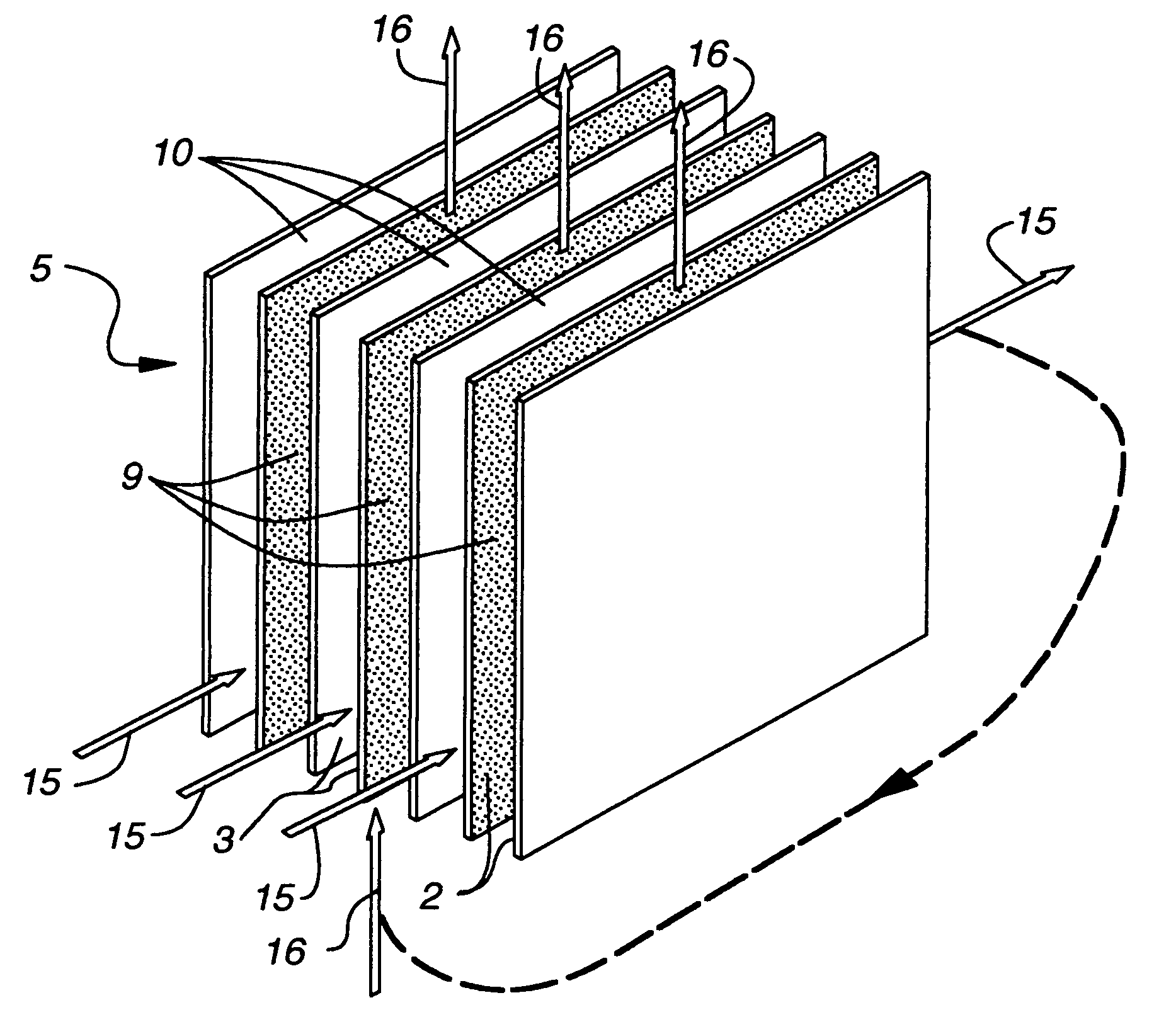Indirect evaporative cooling mechanism
a cooling mechanism and indirect technology, applied in the field of indirect evaporative cooling, can solve the problems of limited maximum cooling that can occur, limited evaporative cooling use, and commercial disadvantages of current systems, and achieve the effect of increasing efficiency, economy and productivity
- Summary
- Abstract
- Description
- Claims
- Application Information
AI Technical Summary
Benefits of technology
Problems solved by technology
Method used
Image
Examples
Embodiment Construction
[0022] One component of an evaporative cooler system that is herein disclosed as an improved and novel component is the heat exchange surface. In prior systems of evaporative cooling the heat exchanger surface often was metal sheeting or plastic sheeting. As disclosed in the referenced patents the use of a metal sheet with a fluid layer has been used. The within invention makes use of a combination or composite sheeting or plate (1), but accomplishes and improves efficiency due to its selection and structure of materials.
[0023] The composite sheeting that is used in the within disclosure consists of two layers. The water-conducting layer that we call the wick layer (2), can be made of cellulose, polyester or other similar materials such as polypropylene or fiberglass. The preferred embodiment is of cellulose. Cellulose also has good wicking capabilities but may need structural or form support to keep it in a proper shape when it is wet, and to keep it from deforming when drying. In...
PUM
 Login to View More
Login to View More Abstract
Description
Claims
Application Information
 Login to View More
Login to View More - R&D
- Intellectual Property
- Life Sciences
- Materials
- Tech Scout
- Unparalleled Data Quality
- Higher Quality Content
- 60% Fewer Hallucinations
Browse by: Latest US Patents, China's latest patents, Technical Efficacy Thesaurus, Application Domain, Technology Topic, Popular Technical Reports.
© 2025 PatSnap. All rights reserved.Legal|Privacy policy|Modern Slavery Act Transparency Statement|Sitemap|About US| Contact US: help@patsnap.com



